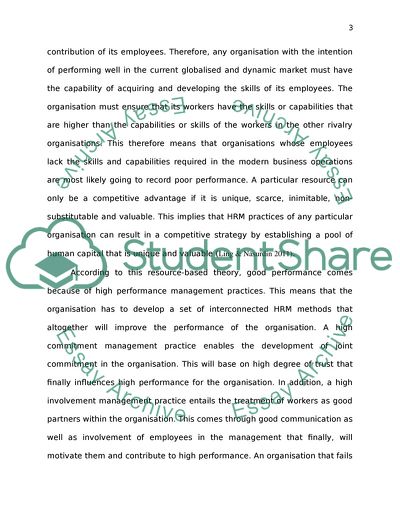Cite this document
(If HRM practices have a positive effect on organisational performance, Assignment, n.d.)
If HRM practices have a positive effect on organisational performance, Assignment. https://studentshare.org/human-resources/1849237-if-hrm-practices-have-a-positive-effect-on-organisational-performance-why-do-so-few-firms-adopt-high-performance-work-systems-draw-on-theory-and-evidence-to-illustrate-your-answer
If HRM practices have a positive effect on organisational performance, Assignment. https://studentshare.org/human-resources/1849237-if-hrm-practices-have-a-positive-effect-on-organisational-performance-why-do-so-few-firms-adopt-high-performance-work-systems-draw-on-theory-and-evidence-to-illustrate-your-answer
(If HRM Practices Have a Positive Effect on Organisational Performance, Assignment)
If HRM Practices Have a Positive Effect on Organisational Performance, Assignment. https://studentshare.org/human-resources/1849237-if-hrm-practices-have-a-positive-effect-on-organisational-performance-why-do-so-few-firms-adopt-high-performance-work-systems-draw-on-theory-and-evidence-to-illustrate-your-answer.
If HRM Practices Have a Positive Effect on Organisational Performance, Assignment. https://studentshare.org/human-resources/1849237-if-hrm-practices-have-a-positive-effect-on-organisational-performance-why-do-so-few-firms-adopt-high-performance-work-systems-draw-on-theory-and-evidence-to-illustrate-your-answer.
“If HRM Practices Have a Positive Effect on Organisational Performance, Assignment”. https://studentshare.org/human-resources/1849237-if-hrm-practices-have-a-positive-effect-on-organisational-performance-why-do-so-few-firms-adopt-high-performance-work-systems-draw-on-theory-and-evidence-to-illustrate-your-answer.


